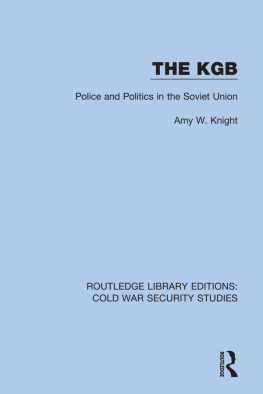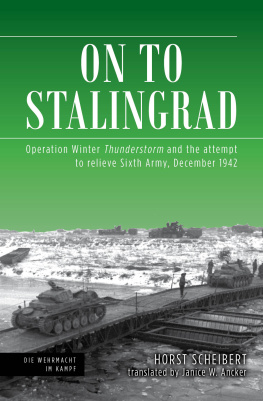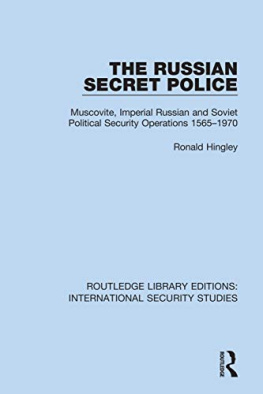Physics
in a Mad World
Houtermans Golfand
Physics
in a Mad World
Houtermans Golfand
Editor
M. Shifman
University of Minnesota
Translated from Russian by
James Manteith

Published by
World Scientific Publishing Co. Pte. Ltd.
5 Toh Tuck Link, Singapore 596224
USA office: 27 Warren Street, Suite 401-402, Hackensack, NJ 07601
UK office: 57 Shelton Street, Covent Garden, London WC2H 9HE
British Library Cataloguing-in-Publication Data
A catalogue record for this book is available from the British Library.
Translation from Russian by James Manteith
Cover design by Anna Lovsky
PHYSICS IN A MAD WORLD
Copyright 2016 by World Scientific Publishing Co. Pte. Ltd.
All rights reserved. This book, or parts thereof, may not be reproduced in any form or by any means, electronic or mechanical, including photocopying, recording or any information storage and retrieval system now known or to be invented, without written permission from the publisher.
For photocopying of material in this volume, please pay a copying fee through the Copyright Clearance Center, Inc., 222 Rosewood Drive, Danvers, MA 01923, USA. In this case permission to photocopy is not required from the publisher.
ISBN 978-981-4619-28-8
ISBN 978-981-4619-29-5 (pbk)
Printed in Singapore
CONTENTS
M. Shifman
M. Shifman
Victor Frenkel
(Compiled by the Editor)
Charlotte Houtermans
Boris Diakov, G. Nikolaev, and Olga Cherneva
Friedrich Georg Houtermans
Alexander Weissberg
Edoardo Amaldi
Boris Eskin
Boris Bolotovsky
PREFACE
M. SHIFMAN
William I. Fine Theoretical Physics Institute
University of Minnesota, Minneapolis MN 55455, USA
When destination becomes destiny...
Five decades from the 1920s till 1970s were the golden age of physics. Never before have developments in physics played such an important role in the history of civilization, and they probably never will again. This was an exhilarating time for physicists.
The same five decades also witnessed terrible atrocities, cruelty and degradation of humanity on an unprecedented scale. The rise of dictatorships (e.g., in Europe, German national socialism and the communist Soviet Union) brought misery to millions. El sueo de la razn produce monstruos...
In 2012, when I was working on the book Under the Spell of Landau I thought this would be my last book on the history of theoretical physics and the fate of physicists under totalitarian regimes (in the USSR in an extreme form as mass terror in the 1930s and 40s, and in a milder but still onerous and humiliating form in the Brezhnev era). I thought that modern Russia was finally rid of its dictatorial past and on the way to civility. Unfortunately, my hopes remain fragile: recent events show that the past holds its grip. We are currently witnessing recurrent (and even dangerously growing) symptoms of authoritarian rule: with political opponents of the supreme leader forced into exile or intimidated, with virtually no deterrence from legislators or independent media, the nations future depends on decisions made singlehandedly. Observing current events in Russia, I better understand how Nazi Germany or the Stalin-Brezhnev Soviet Union could have happened. The future of Russia at large, and of the Russian intelligentsia in particular, is rather unpredictable at the moment. Alas... it seems that lessons from the past are never obsolete.
Recently I came across a number of remarkable essays written in Russian about the lives of two theoretical physicists in the USSR. Although they did not know each other, they both spent some time in Kharkov (now in Ukraine), and there are many other commonalities in their destinies. These essays can be read as highly instructive detective stories, and I decided that it would be important to familiarize Western readers with them. Thus I returned to the task I had set myself previously and which I had left when I finished Under the Spell of Landau.
This collection will tell the captivating stories of the misadventures of two renowned physicists.
This part is devoted to Friedrich (Fritz) Houtermans, an outstanding physicist who was the first to suggest that the source of stars energy is thermonuclear fusion, and who made a number of other important contributions to astrochemistry and geochemistry. In 1935 Houtermans, who was a German communist, fled to the Soviet Union in an attempt to save his life from Hitlers Gestapo. Houtermans took an appointment at the Ukrainian Physico-Technical Institute (also known as Kharkov Fiztech) and worked there for three years with the Russian physicist Valentin P. Fomin. In the Great Purge of 1937, Houtermans was arrested by the NKVD (the Soviet Secret Police, the KGBs However, by that time Charlotte had already escaped from the Soviet Union to Denmark, after which she went to England and finally the USA. After the Hitler-Stalin Pact of 1939, Houtermans was turned over to the Gestapo in May 1940 and imprisoned in Berlin.
The second part consists of two essays written by Boris Eskin and Boris Bolotovsky, respectively, narrating the life story of Yuri Golfand, one of the co-discoverers of supersymmetry, a revolutionary concept in theoretical physics in the twentieth century. In 1973, just two years after the publication of his seminal paper, he was fired from the Lebedev Physics Institute in Moscow. Because of his Jewish origins he could find no job. Under these circumstances, he applied for an exit visa to Israel, but his application was denied. Yuri Golfand became a refusenik the KGB. Only 18 years after applying for his exit visa did he obtain permission to leave the country, emigrating to Israel in 1990, shortly before the demise of the Soviet Union.
Many background events that may be sufficiently well-known to the Russian reader but may remain relatively obscure to the Western reader needed accounting for. Accordingly, I have added numerous footnotes scattered throughout the text which hopefully fill the gap and introduce intriguing layers of additional research.
When I started working on these supplementary notes, I realized that I had to dig deeper. In recent years, new archival documents had become available. I met and communicated with many people who knew Houtermans or Golfand, or had some new information about the personae mentioned in this collection. Suffice to mention Natasha Koretz (Yuri Golfands widow), Giovanna Fjelstad (Houtermans daughter), Jean Richards (va Strikers daughter), Mica Nava (Konrad Weisselbergs niece), Artjom Kharlamov (Konrad Weisselbergs grandson), and Michael Koretz (Moisei Koretzs grandson). I obtained from them a large number of relevant photographs which have never been published previously, and I found some others in various archives and online.
Soon I realized that I had much more to say than the footnotes could accommodate. In the case of a few chapters I decided to extend the writers texts with Editors Addenda placed after each given chapters conclusion, drawing on recently acquired knowledge to shed light on events narrated by the authors. Moreover, I collected other findings in a rather lengthy Introduction. The reader less interested in background details may skip this Introduction, or return to it later, after reading .
Next page







